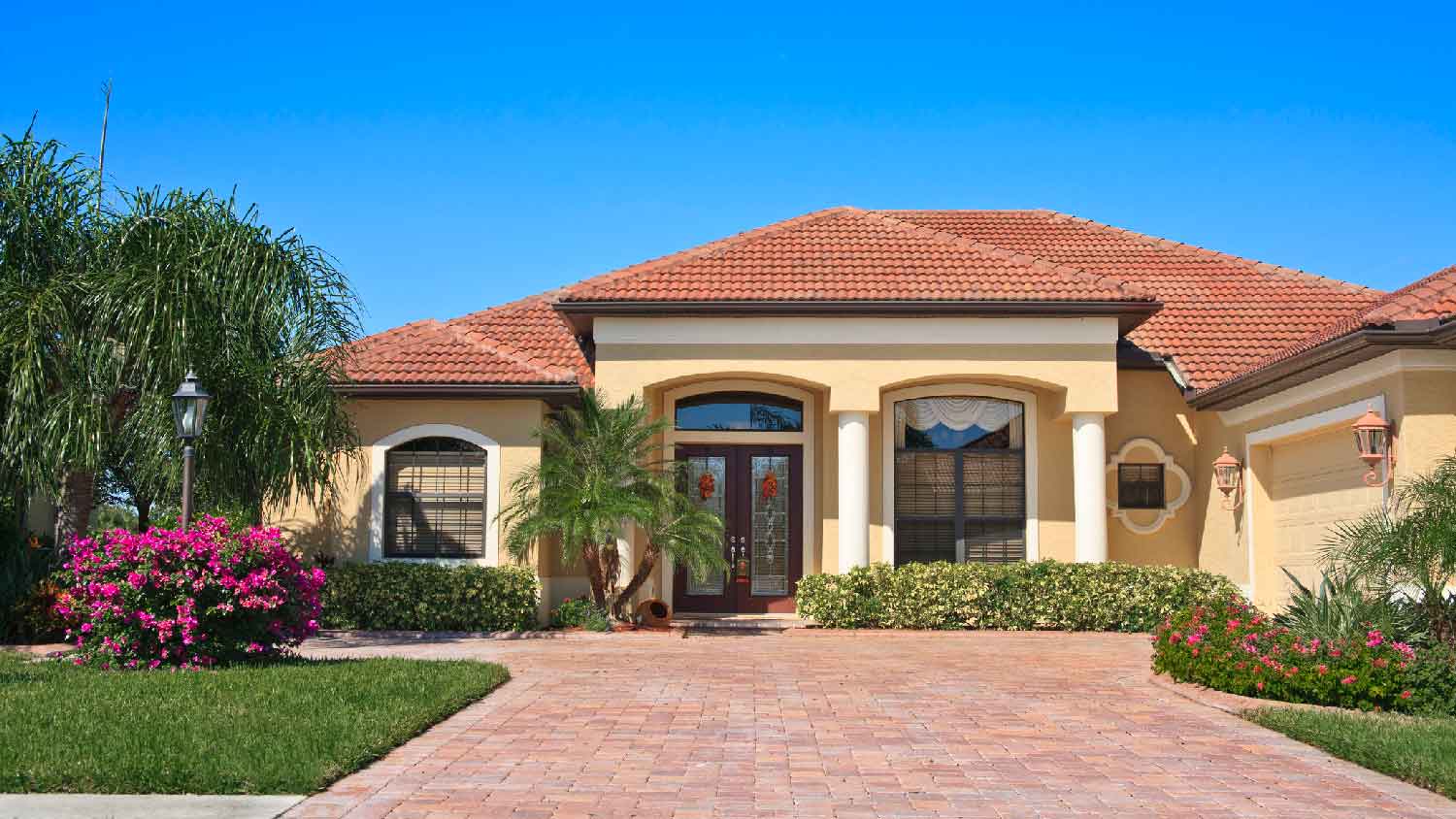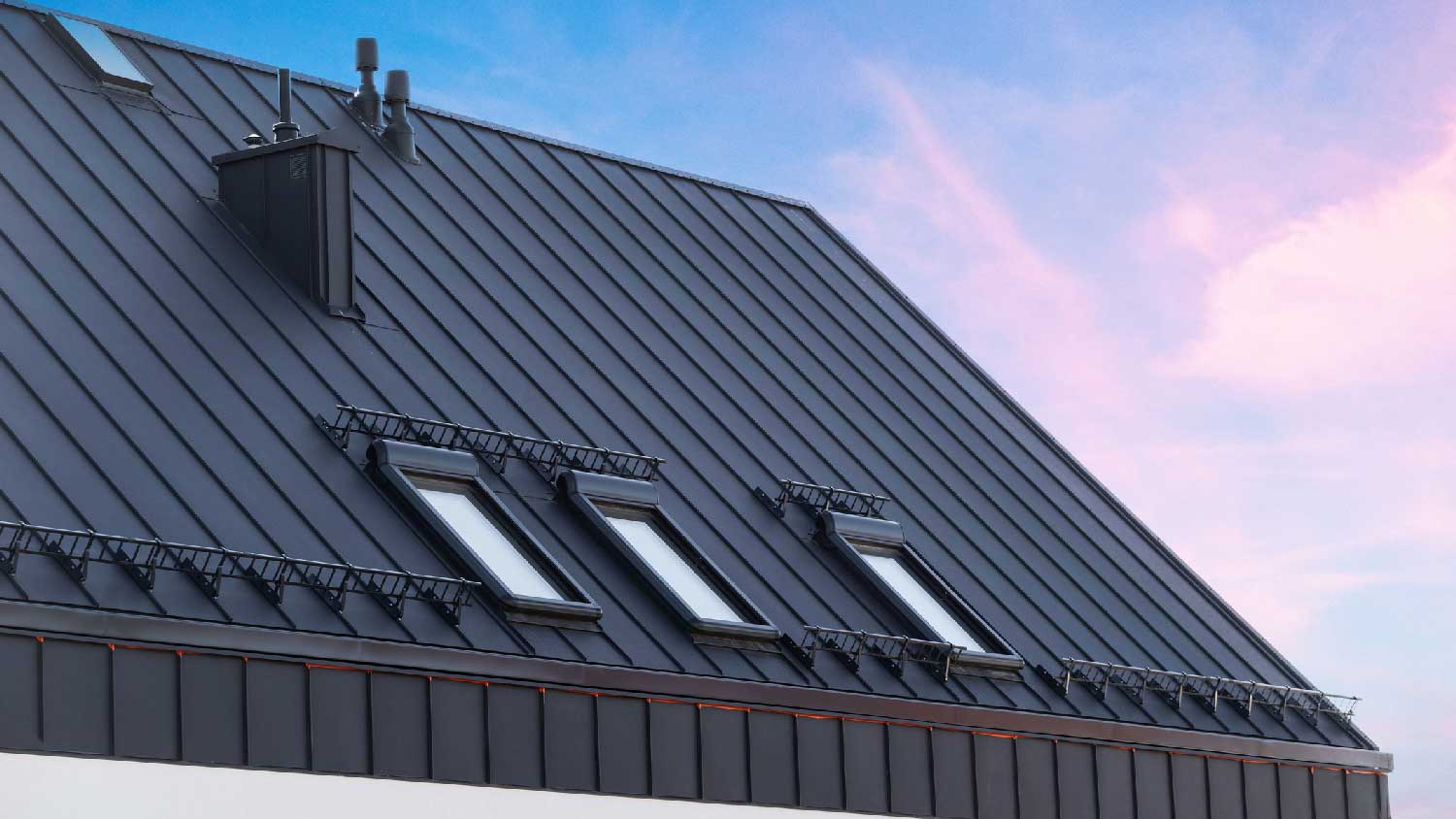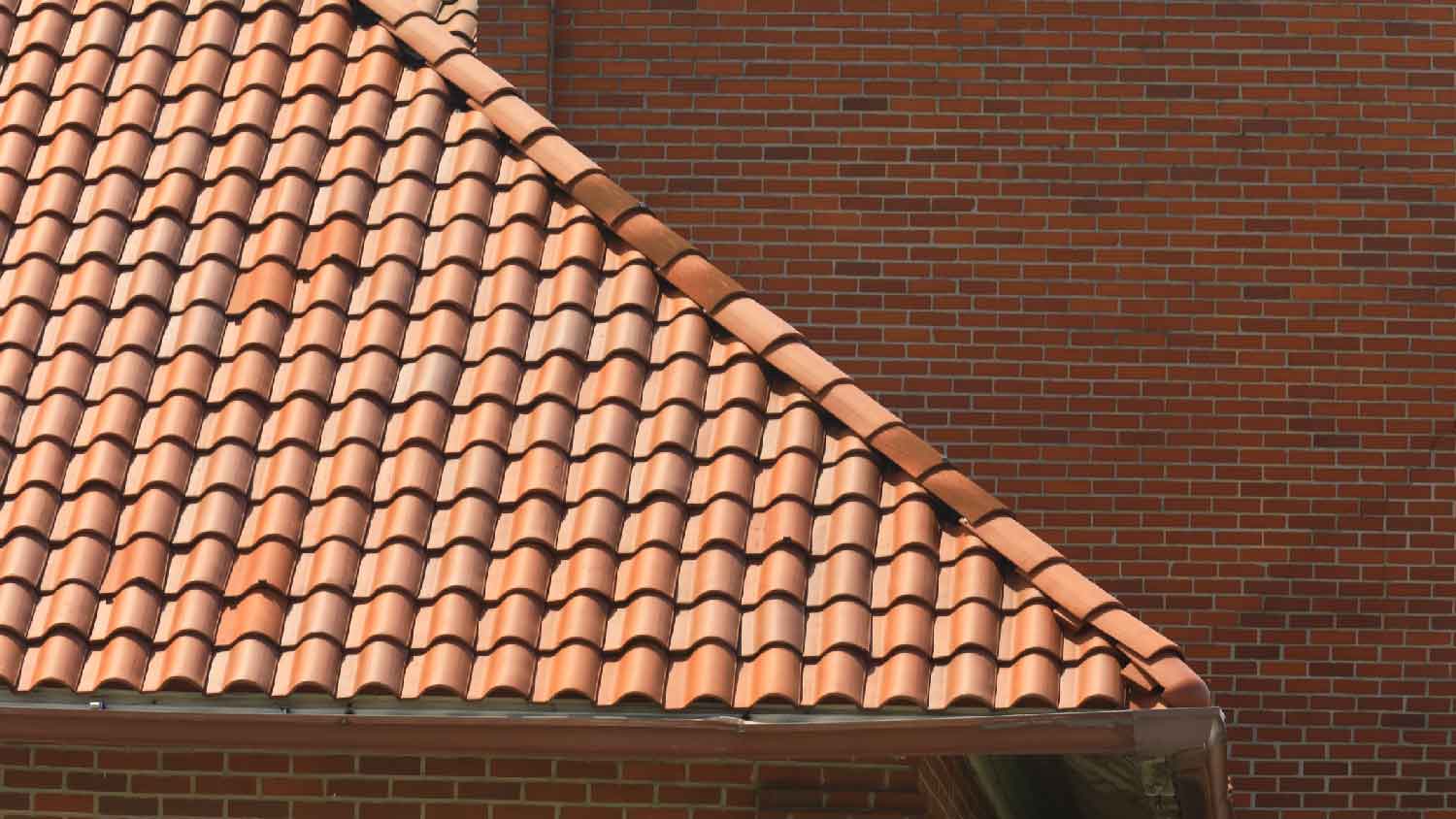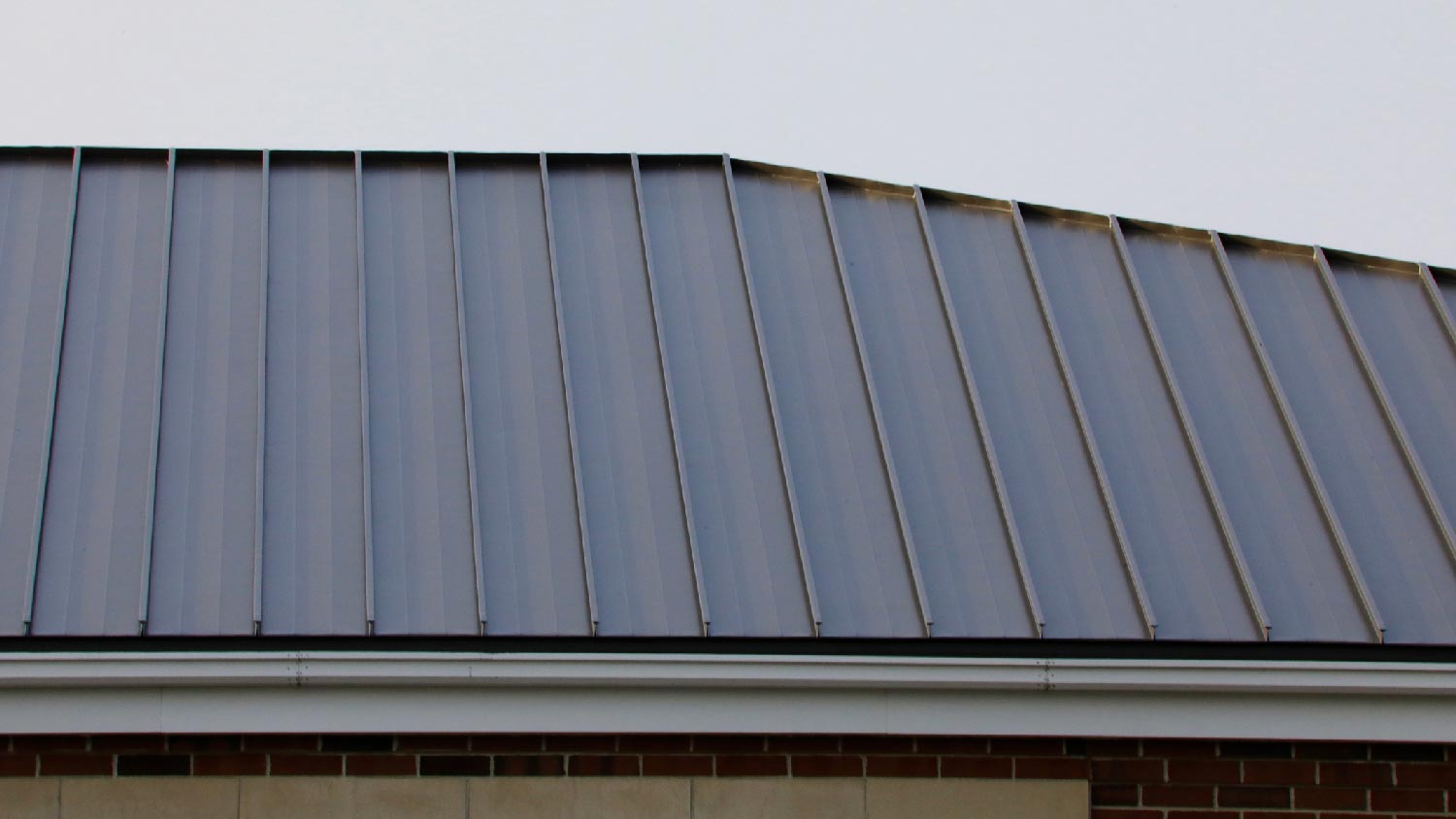Metal Roof vs. Tile Roof: Which Should You Choose?
Make sure your home is covered with the right kind of roofing


Metal and tile roofs offer durable, long-lasting performance and upscale aesthetics.
Tile roofs are ideal for hot, humid climates and roofs with a lower slope.
Metal roofs work well for moderate to steeply pitched roofs in areas with heavy snowfall or extreme weather.
Homeowners looking for alternatives to traditional shingle roofs have a lot of roofing options to choose from, including metal and tile. Both metal and tile roofs offer longevity, durability, and aesthetic appeal, but these two roofing materials are quite different in several ways. Our guide explores the pros and cons of metal and tile roofs so you have all the information you need to choose the right roof for your home.
Metal Roof vs. Tile Roof: Key Differences
When choosing between a metal and tile roof, it’s important to know how these materials differ. Metal roofs are lightweight, durable, and low maintenance, while tile roofs offer thermal resistance and distinctive aesthetics. Both materials are fire-resistant and eco-friendly, but each has its drawbacks as well—metal roofs can be noisy and may leak, while tile roofs are heavy and prone to impact damage.
Homeowners should look for a lifetime warranty that comes standard with the roofing product and be sure to read the fine print to learn specifically what the warranty covers.
- Michelle Burson, Vice President of Marketing at DECRA Metal Roofing
What Is a Metal Roof?

A metal roof is constructed of panels made of steel, aluminum, copper, or zinc. The panels are affixed to the roof structure using one of two methods—either standing seam or screw down. Standing seam roofs have hidden fasteners for an uninterrupted surface, and screw down roofs have exposed fasteners.
Metal roofs come in a wide variety of designs and finishes, from unadorned steel panels to patterns that mimic shake-style roofs. These roofs are known for their longevity, durability, and lightweight construction.
| Pros | Cons |
|---|---|
| Long-lasting | Prone to leaks |
| Durable | Noisy |
| Lightweight | Can experience thermal contraction |
Best for:
Areas with heavy snow and ice
Homes that can’t support a heavy roof
Roofs with moderate to steep pitches
Pros of a Metal Roof
Metal roofs have a long lifespan, lasting 40 to 80 years or more, compared with 15 to 30 years for a traditional asphalt shingle roof. They’re also durable and can withstand extreme weather, moderate impacts, heavy snow, and high winds. They’re also lightweight in comparison to other materials, so they won’t put added stress on the roofing supports or your home.
Cons of a Metal Roof
While standing seam metal roofs offer superior water resistance, the exposed fasteners on a screw down metal roof can cause leaks. Metal roofs can be noisy, so if you experience frequent hail or heavy rain, the added noise may be a dealbreaker. In some cases, a metal roof can make your home hotter if not installed with appropriate ventilation. They’re also prone to thermal contraction, which can cause gaps around roof penetrations like chimneys and skylights.
What Is a Tile Roof?

Tile roofs can be made from clay, ceramic, concrete, slate, and other materials. They offer an attractive, upscale look and are often found on Mediterranean- and Spanish-style homes. Tile roofs can be found in many colors, finishes, shapes, and styles and are highly customizable for a distinctive look. These roofs provide excellent thermal resistance, so they’re ideal in hotter climates, and they’re long-lasting, although less durable than their metal counterparts.
| Pros | Cons |
|---|---|
| Long lifespan | Prone to impact damage |
| Eco-friendly | Heavy |
| Energy-efficient | Expensive |
Best for:
Homes in hotter climates
Spanish- and Mediterranean-style homes
Homes exposed to high humidity
Homes with a low pitch
Pros of a Tile Roof
When it comes to longevity, it’s hard to beat a tile roof—they can last 70 to 100 years or more with proper maintenance and repairs. Tile is also one of the most eco-friendly roofing materials, particularly clay or ceramic tiles. In addition, a tile roof’s thermal regulation is a big selling point in hot, humid climates, keeping heat and moisture out and cool air in.
Cons of a Tile Roof
Tile roofs are beautiful, but they’re also fragile. They’re prone to impact damage, but fortunately, it’s fairly simple to replace individual tiles. Tiles are also significantly heavier than other roofing materials, requiring a stronger support structure to hold their weight. The heavy weight also limits the pitch of the roof—these tiles are only recommended for roofs with a lower slope. Tile roofs are also more expensive than other materials, but they’ll last much longer.
Metal Roof vs. Tile Roof

Appearance: Tile Roof
While metal roofs have come a long way, appearance-wise, tile roofs have a high-end look that can complement a variety of home styles. Metal roofs are still often considered industrial-looking, and some homeowner association rules even prohibit metal roofs due to their appearance.
Options and Customization: Tile Roof
Both metal roofs and tile roofs come in different styles and patterns, but tile roofs offer more customization options when it comes to design, color, shape, and size.
Durability: Metal Roof
It takes a lot to damage a metal roof, so it’ll hold up better to extreme weather and impact damage than fragile tile. There’s a reason you’ll find metal roofs in areas that get heavy snowfall and high winds—these roofs can take a beating with very little damage.
Price: Metal Roof
Installing a tile roof costs between $7 and $25 per square foot, compared to metal roof costs of $4 to $15 per square foot for most metals except copper, which can run up to $30 per square foot.
Ease of Installation: Metal Roof
Both metal and tile roofs require precise installation by experienced professionals, but the lightweight and flexible properties of metal roofs make them easier to install than heavy, rigid tile. A local metal roof installer has the experience and equipment to ensure your roof is properly installed.
Ease of Repair: Tile Roof
A tile roof is more easily damaged than a metal one but is simpler to repair. In most cases, a damaged roof tile can be replaced without disturbing surrounding tiles, while metal roof repairs require patching or partial replacement, affecting more than just the damaged area.
Maintenance: Metal Roof
Tile roofs require regular maintenance to keep the tiles clean, free of mildew, and intact. Metal roofs require very little upkeep—an annual inspection and periodic debris removal will keep your metal roof in good condition for years to come.
Lifespan: Tile Roof
Both tile and metal roofs will outlast asphalt shingles by quite a bit, but tile roofs have an advantage over metal when it comes to longevity, lasting 70 to 100 years or more compared to 40 to 80 years for metal.
Resale Value: Tie
A new roof’s effect on your home’s value depends on where you live, the specifics of your home, and the roof itself. While a metal roof can increase your home value, tile roofs are often seen by prospective buyers as premium features and can translate into a higher price when it comes time to sell.





- Roofers
- Metal Roofing
- Roof Repair
- Roof Inspection
- Vinyl Siding Repair Contractors
- Flat Roofing Companies
- Commercial Roofing
- Emergency Roofing Companies
- Leaky Roof Repair
- Metal Roof Repair
- Business Roof Repair
- Flat Roof Repair
- Tile Roof Repair
- Slate Roofers
- Rubber Roofers
- Roofing & Siding
- Metal Roof Installation
- Affordable Roofing
- Roof Sealing
- Attic Ventilation Contractors










